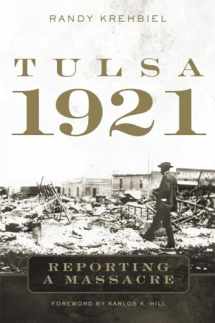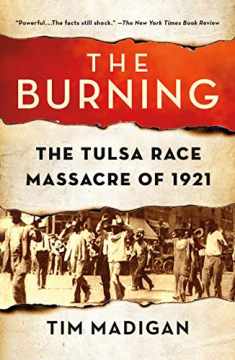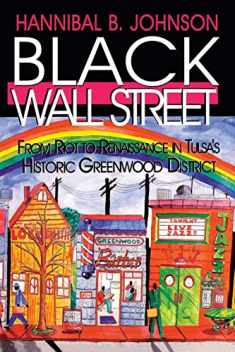
Tulsa, 1921: Reporting a Massacre
ISBN-13:
9780806163314
ISBN-10:
0806163313
Edition:
Illustrated
Author:
Randy Krehbiel
Publication date:
2019
Publisher:
University of Oklahoma Press
Format:
Hardcover
328 pages
FREE US shipping
on ALL non-marketplace orders
Rent
35 days
Due Jun 22, 2024
35 days
from $22.68
USD
Marketplace
from $30.55
USD
Marketplace offers
Seller
Condition
Note
Seller
Condition
New
Brand New! Not overstocks! Brand New direct from the publisher! Ships in sturdy cardboard packaging.
Book details
ISBN-13:
9780806163314
ISBN-10:
0806163313
Edition:
Illustrated
Author:
Randy Krehbiel
Publication date:
2019
Publisher:
University of Oklahoma Press
Format:
Hardcover
328 pages
Summary
Tulsa, 1921: Reporting a Massacre (ISBN-13: 9780806163314 and ISBN-10: 0806163313), written by authors
Randy Krehbiel, was published by University of Oklahoma Press in 2019.
With an overall rating of 4.0 stars, it's a notable title among other
Black & African Americans
(United States History, State & Local, Historical Study & Educational Resources, Violence in Society, Social Sciences, Americas History) books. You can easily purchase or rent Tulsa, 1921: Reporting a Massacre (Hardcover) from BooksRun,
along with many other new and used
Black & African Americans
books
and textbooks.
And, if you're looking to sell your copy, our current buyback offer is $0.54.
Description
In 1921 Tulsa’s Greenwood District, known then as the nation’s “Black Wall Street,” was one of the most prosperous African American communities in the United States. But on May 31 of that year, a white mob, inflamed by rumors that a young black man had attempted to rape a white teenage girl, invaded Greenwood. By the end of the following day, thousands of homes and businesses lay in ashes, and perhaps as many as three hundred people were dead.
Tulsa, 1921 shines new light into the shadows that have long been cast over this extraordinary instance of racial violence. With the clarity and descriptive power of a veteran journalist, author Randy Krehbiel digs deep into the events and their aftermath and investigates decades-old questions about the local culture at the root of what one writer has called a white-led pogrom.
Krehbiel analyzes local newspaper accounts in an unprecedented effort to gain insight into the minds of contemporary Tulsans. In the process he considers how the Tulsa World, the Tulsa Tribune, and other publications contributed to the circumstances that led to the disaster and helped solidify enduring white justifications for it. Some historians have dismissed local newspapers as too biased to be of value for an honest account, but by contextualizing their reports, Krehbiel renders Tulsa’s papers an invaluable resource, highlighting the influence of news media on our actions in the present and our memories of the past.
The Tulsa Massacre was a result of racial animosity and mistrust within a culture of political and economic corruption. In its wake, black Tulsans were denied redress and even the right to rebuild on their own property, yet they ultimately prevailed and even prospered despite systemic racism and the rise during the 1920s of the second Ku Klux Klan. As Krehbiel considers the context and consequences of the violence and devastation, he asks, Has the city—indeed, the nation—exorcised the prejudices that led to this tragedy?


We would LOVE it if you could help us and other readers by reviewing the book
Book review

Congratulations! We have received your book review.
{user}
{createdAt}
by {truncated_author}




